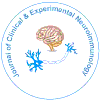Lauric Acid Defends the Brain: A Promising Neuroprotective Strategy Against Oxidative Stress
Received Date: Jul 01, 2024 / Published Date: Jul 31, 2024
Abstract
Oxidative stress is a key factor in the pathogenesis of many neurodegenerative diseases, including Alzheimer's, Parkinson's, and amyotrophic lateral sclerosis (ALS). The brain is particularly vulnerable to oxidative damage due to its high oxygen consumption, rich lipid content, and relatively weak antioxidant defenses. Recent research has shown that lauric acid, a medium-chain fatty acid commonly found in coconut oil and other natural sources, exhibits significant neuroprotective properties by counteracting oxidative stress. This article explores the mechanisms through which lauric acid provides neuroprotection and its potential therapeutic applications in preventing and managing neurodegenerative disorders.
Citation: Wodall O (2024) Lauric Acid Defends the Brain: A Promising Neuroprotective Strategy Against Oxidative Stress. J Clin Exp Neuroimmunol, 9: 250. Doi: 10.4172/jceni.1000249
Copyright: © 2024 Wodall O. This is an open-access article distributed under the terms of the Creative Commons Attribution License, which permits unrestricted use, distribution, and reproduction in any medium, provided the original author and source are credited.
Share This Article
Recommended Journals
Open Access Journals
Article Tools
Article Usage
- Total views: 307
- [From(publication date): 0-0 - Apr 05, 2025]
- Breakdown by view type
- HTML page views: 145
- PDF downloads: 162
